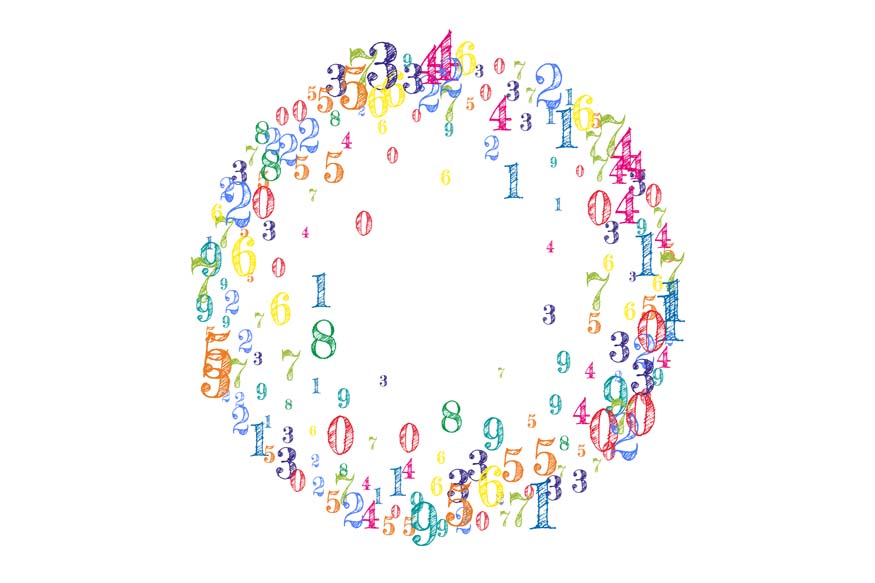Whole numbers are a set of numbers that includes all the positive integers starting from zero. They do not contain any fractions or decimals. Essentially, whole numbers are non-negative numbers without any fractional or decimal parts. This basic concept is integral to various mathematical operations and forms the foundation for more advanced mathematical studies.
Whole numbers are used in everyday life for counting, measuring, and ordering. Their importance extends beyond basic arithmetic. They are crucial for understanding more complex mathematical concepts such as algebra, geometry, and number theory. The properties of whole numbers are similar to those of integers.
Definition and Symbol of Whole Numbers
To fully grasp what a whole number is, it is important to begin with its definition. A whole number is any of the numbers in the set { 0,1,2,3,4,…..}.
This set includes zero and all positive integers, extending infinitely. Whole numbers are often represented by the symbol W, and they are sometimes referred to as non-negative integers because they do not include negative values.
The symbol W is used to denote the set of whole numbers, which can be written as follows:
W ={0,1,2,3,4,…}
This notation clearly illustrates that whole numbers start from zero and continue indefinitely in the positive direction.
Whole Numbers Examples
Providing whole numbers examples helps to clarify the concept further. Examples of whole numbers include:
0,1,2,3,4,5,6,…
These numbers are used for counting discrete objects and performing various mathematical operations. For example, if you have three apples and add two more, you now have five apples. This simple addition operation involves whole numbers. Similarly, if you divide a set of ten marbles equally among five friends, each friend gets two marbles. Again, this involves whole numbers.
List of Whole Numbers
A list of whole numbers is essentially a sequence that starts from zero and goes on indefinitely:
0,1,2,3,4,5,6,7,8,9,10,…
It is important to note that there is no end to the list of whole numbers; it extends infinitely. Whole numbers are infinite because, for any whole number n, there is always a next whole number n+1.
Whole Numbers Chart
A whole numbers chart is a visual representation of whole numbers arranged in a specific order. Such a chart can be helpful for students and educators to understand and teach the concept of whole numbers. A simple whole numbers chart may look like this:
0 1 2 3 4 5 6 7 8 9 10
11 12 13 14 15 16 17 18 19 20
This chart can be extended further as needed to include more whole numbers. The arrangement in rows and columns helps to visualise the sequence and order of whole numbers. The smallest whole number is zero. Unlike other sets of numbers, whole numbers include zero, which is considered the starting point or the smallest value in the set.
Zero is unique because it represents the absence of quantity or a null value. It is the only whole number that is neither positive nor negative. The concept of the largest whole number is more abstract. In theory, there is no largest whole number because the set of whole numbers is infinite. For any whole number n, there is always a larger number n+1. This property highlights the boundless nature of whole numbers, making them an infinite set.
Properties of Whole Numbers
Understanding the properties of whole numbers is essential for performing various mathematical operations. Some key properties of whole numbers include:
Closure Property: Whole numbers are closed under addition and multiplication. This means that the sum or product of any two whole numbers is always a whole number. For example,
3+5=8 and 4×6=24
Commutative Property: Whole numbers follow the commutative property for addition and multiplication. This means that the order in which you add or multiply two whole numbers does not affect the result. For example,
2+3=3+2 and 4×5=5×4
Associative Property: Whole numbers follow the associative property for addition and multiplication. This means that how you group three or more whole numbers when adding or multiplying does not affect the result. For example,
(1+2)+3=1+(2+3) and (2×3)×4=2×(3×4)
Identity Property: Whole numbers have an identity property for addition and multiplication. For addition, the identity element is zero, and for multiplication, the identity element is one. This means that adding zero to any whole number does not change its value, and multiplying any whole number by one does not change its value. For example,
5+0=5 and 6×1=6
Distributive Property: The distributive property relates addition and multiplication of whole numbers. It states that
a×(b+c)=(a×b)+(a×c)
For example,
2×(3+4)=(2×3)+(2×4)
Whole numbers form a fundamental part of mathematics, providing the basis for various mathematical operations and concepts. Understanding whole numbers and the properties of whole numbers helps in developing a strong mathematical foundation. Whole numbers are characterised by their non-negative nature, starting from zero and extending infinitely. The importance of whole numbers is evident in everyday counting, measuring, and ordering, making them an essential component of arithmetic.
At Center Point School, we recognise the significance of building a solid understanding of whole numbers and their properties. Our educators focus on providing students with a comprehensive understanding of mathematical concepts through interactive learning methods, including whole numbers charts and practical examples. By emphasising the foundational concepts of whole numbers, we aim to equip our students with the skills and knowledge necessary for their academic and personal growth.





